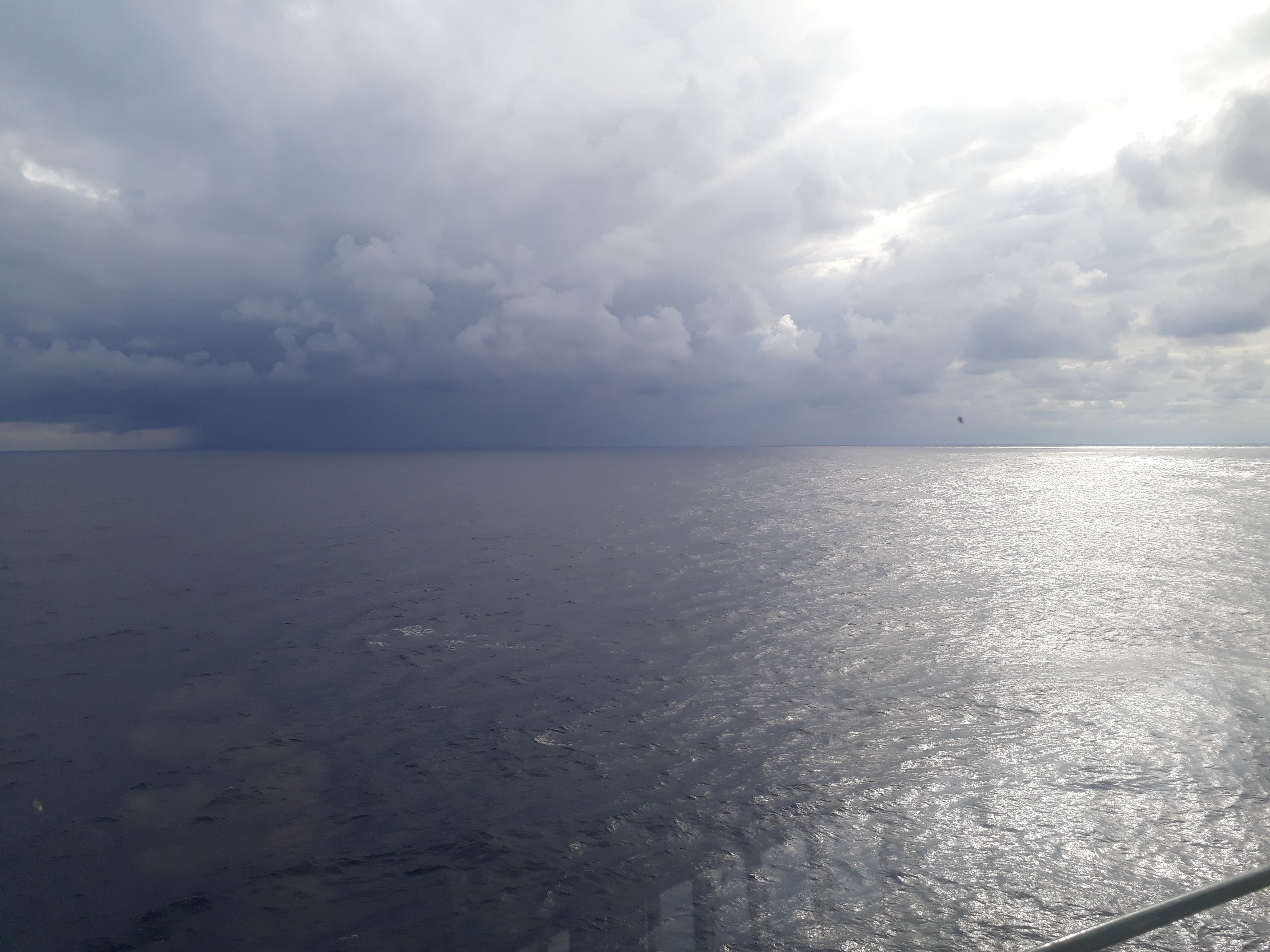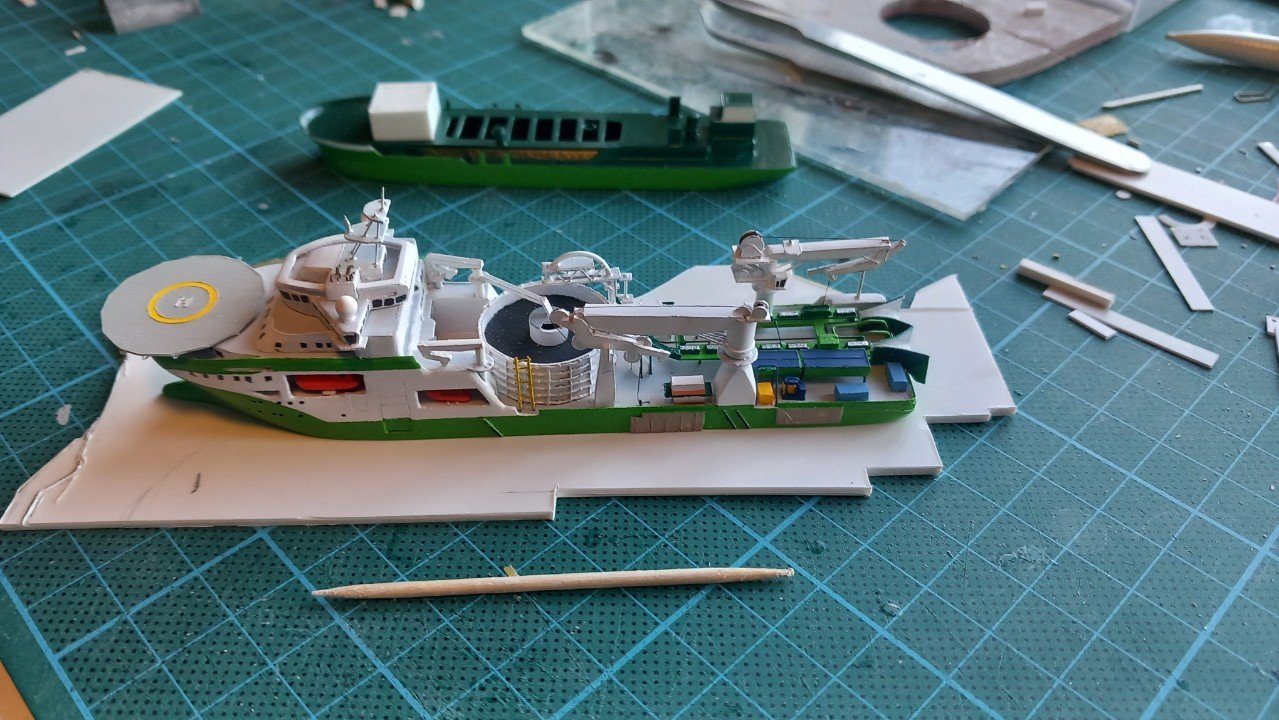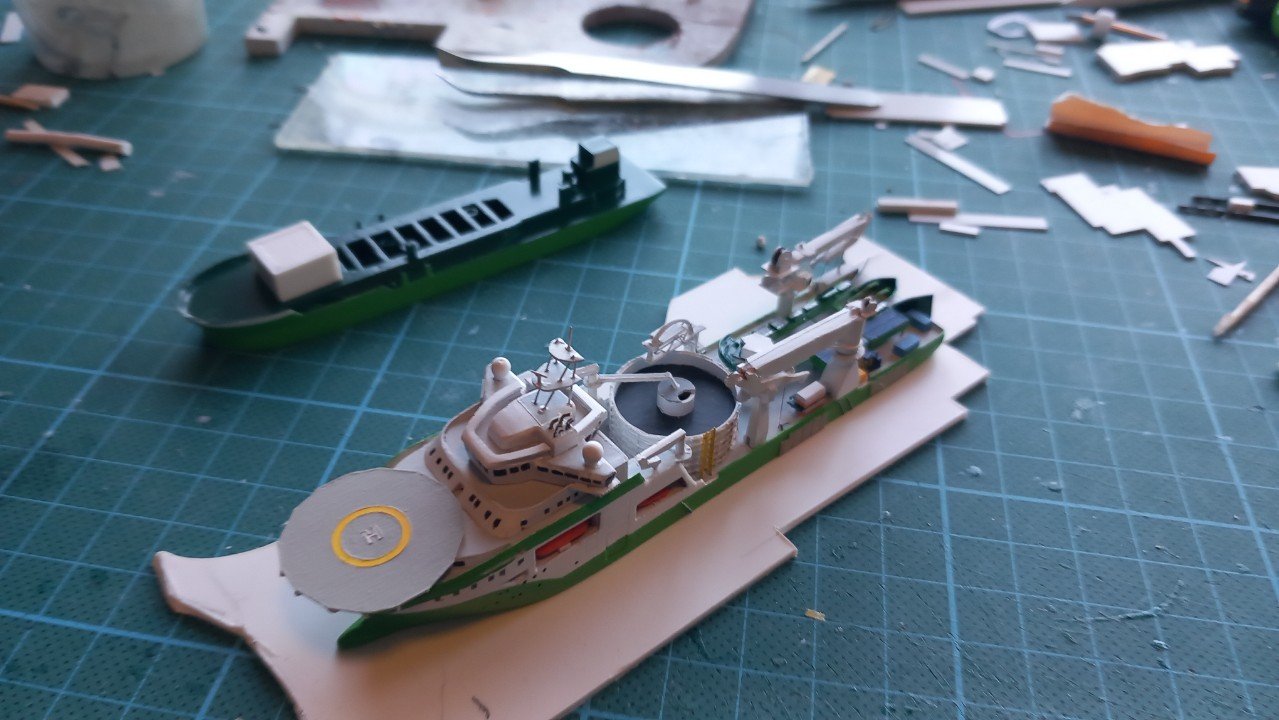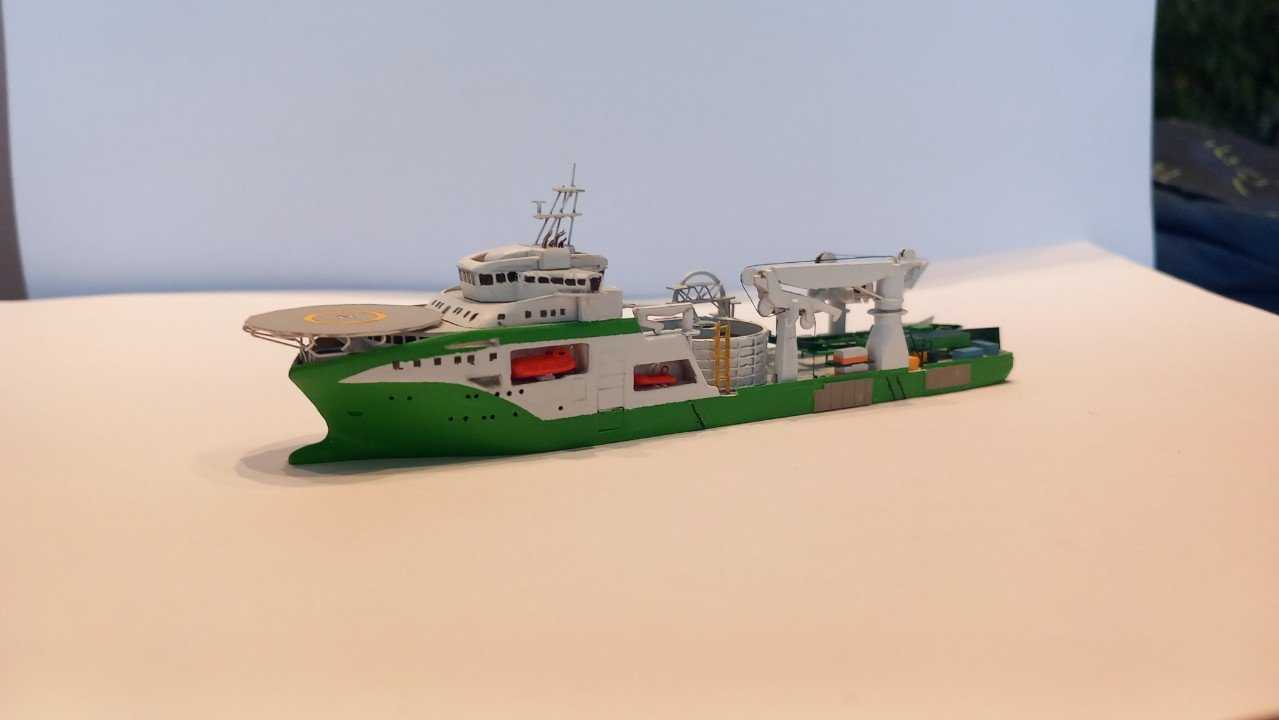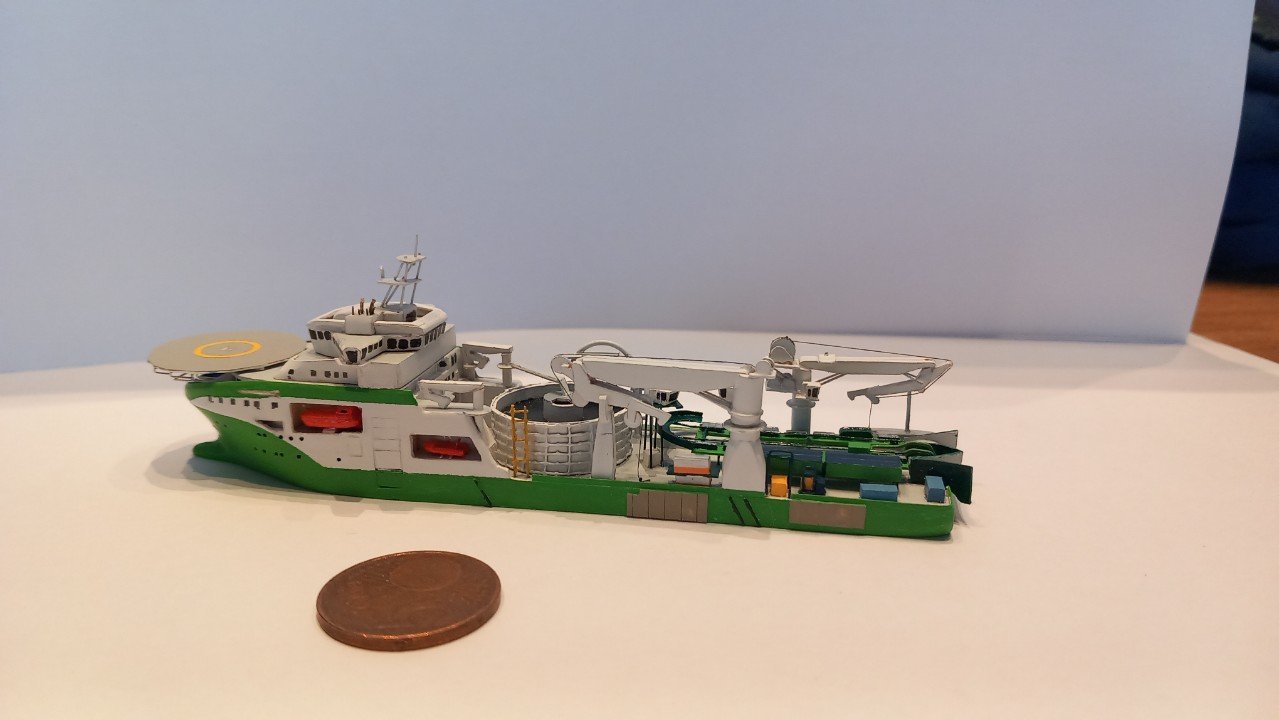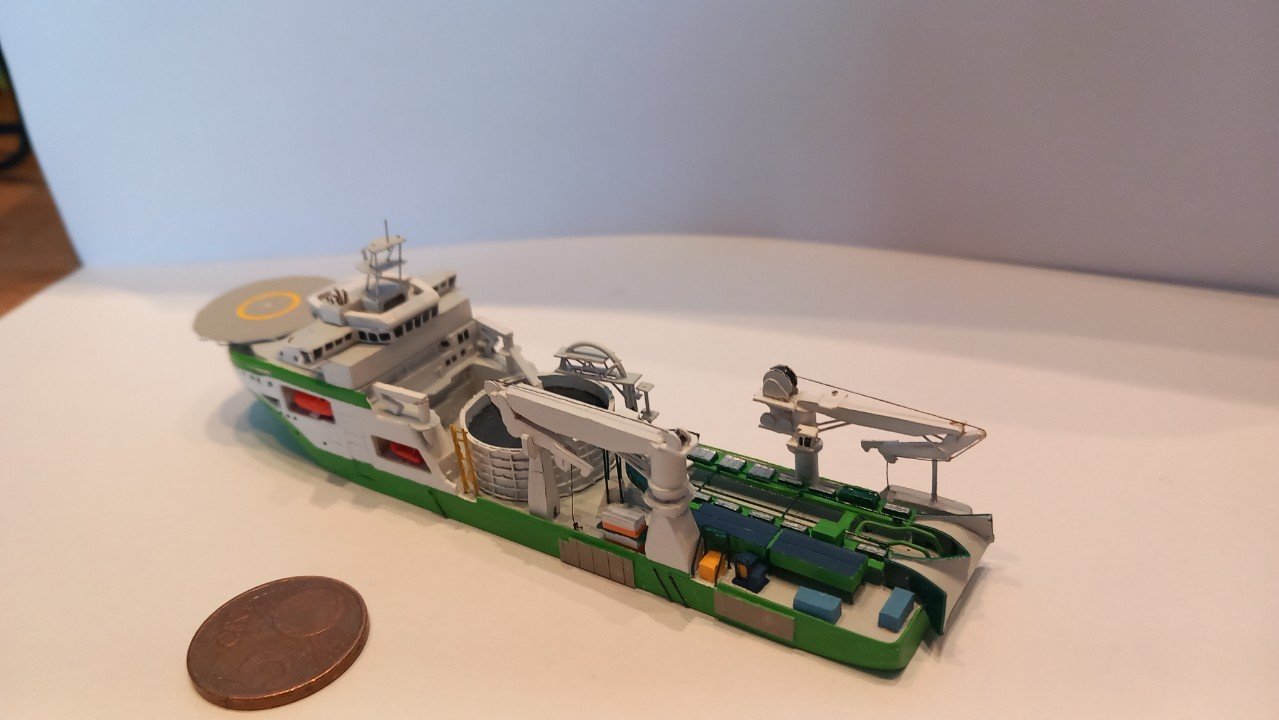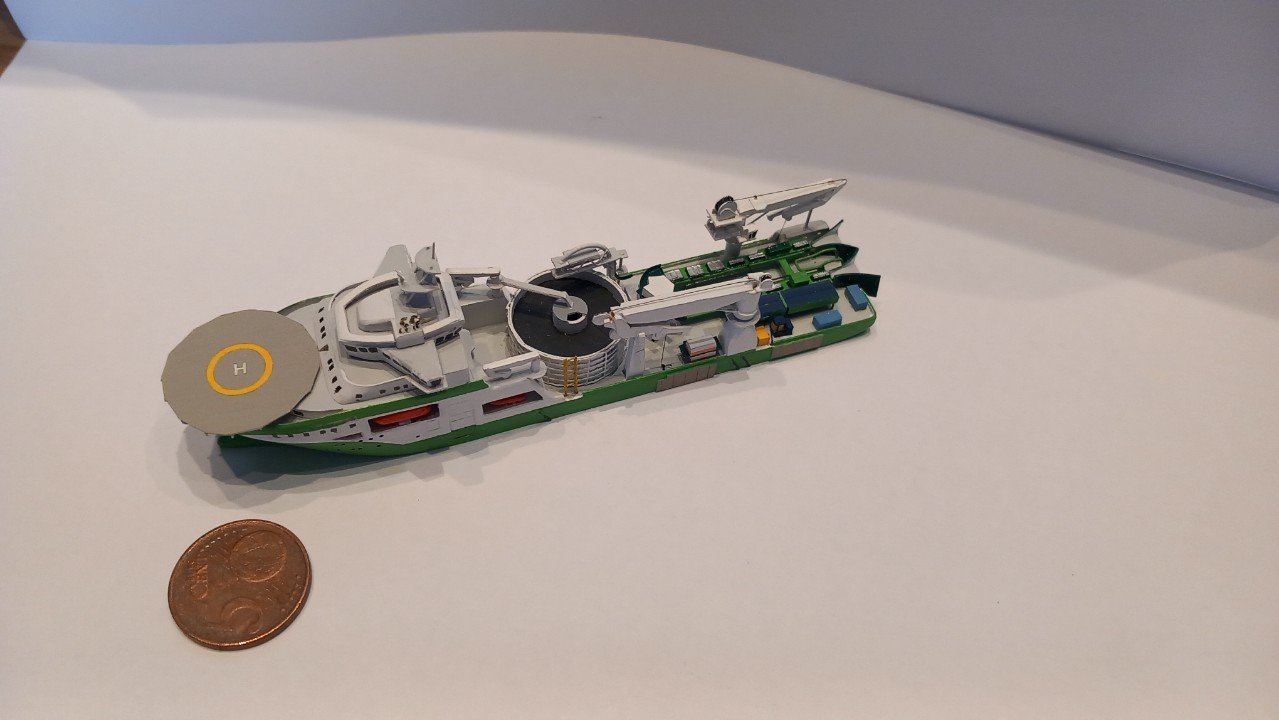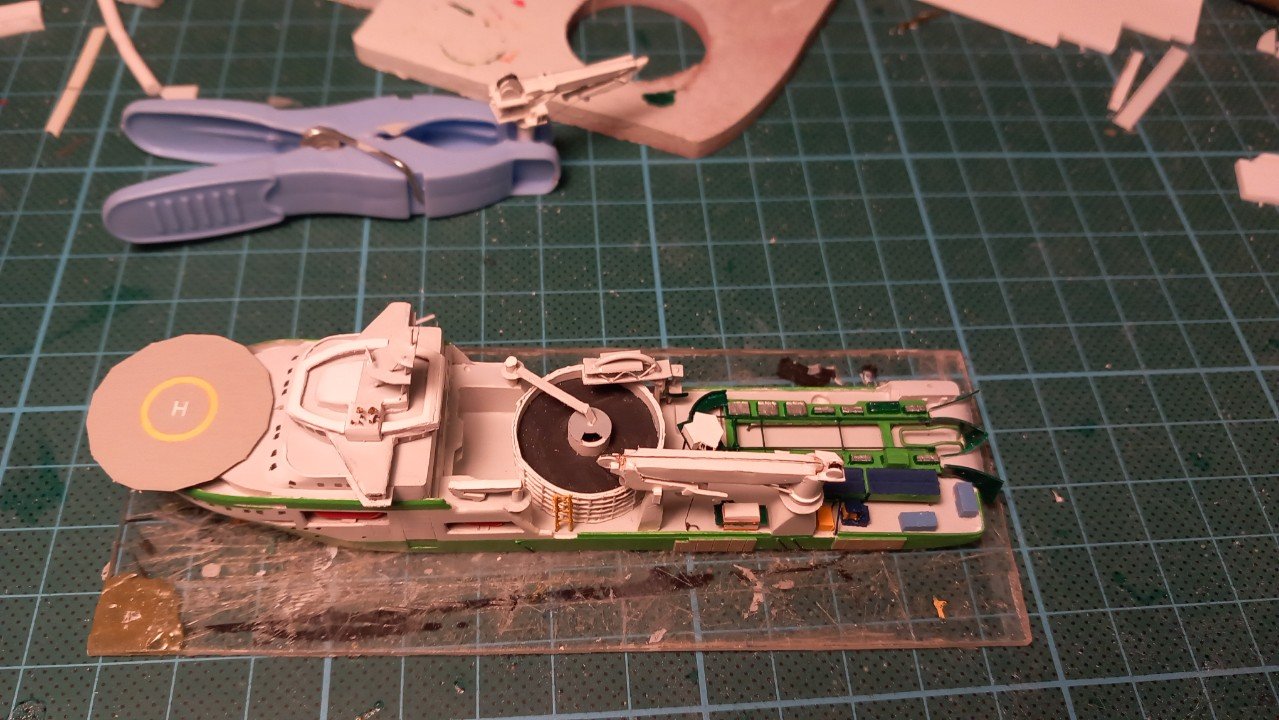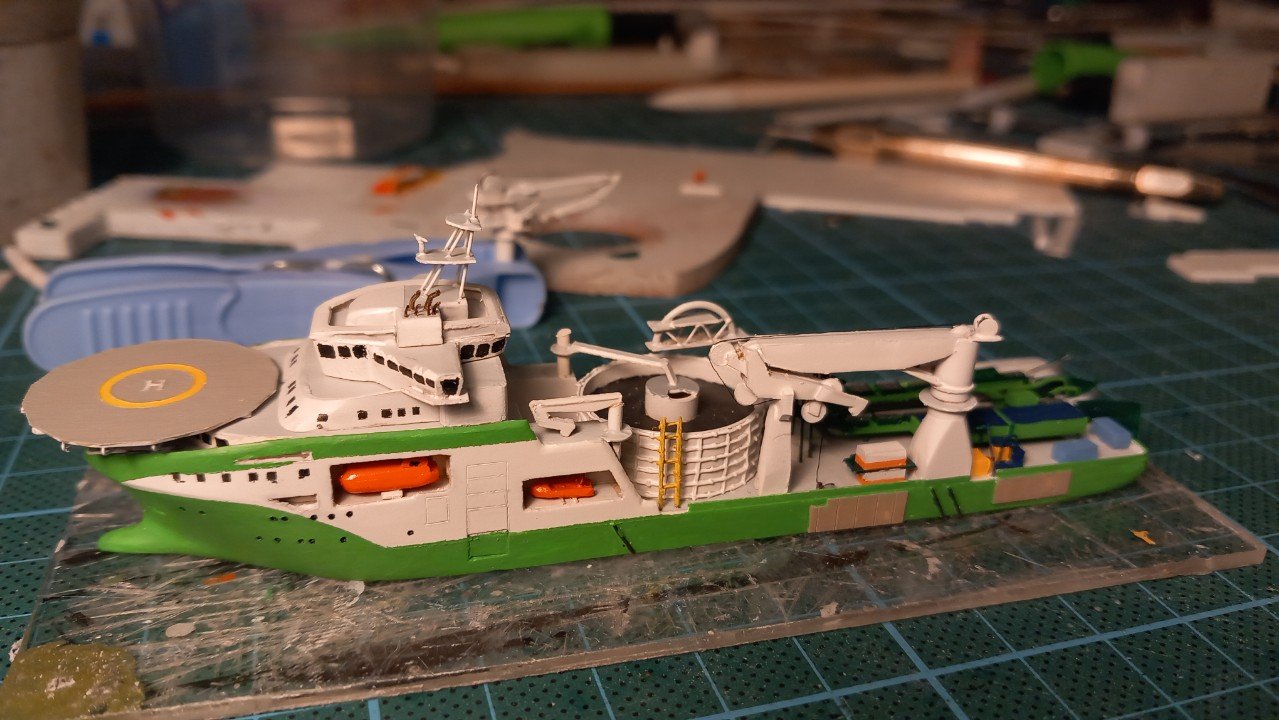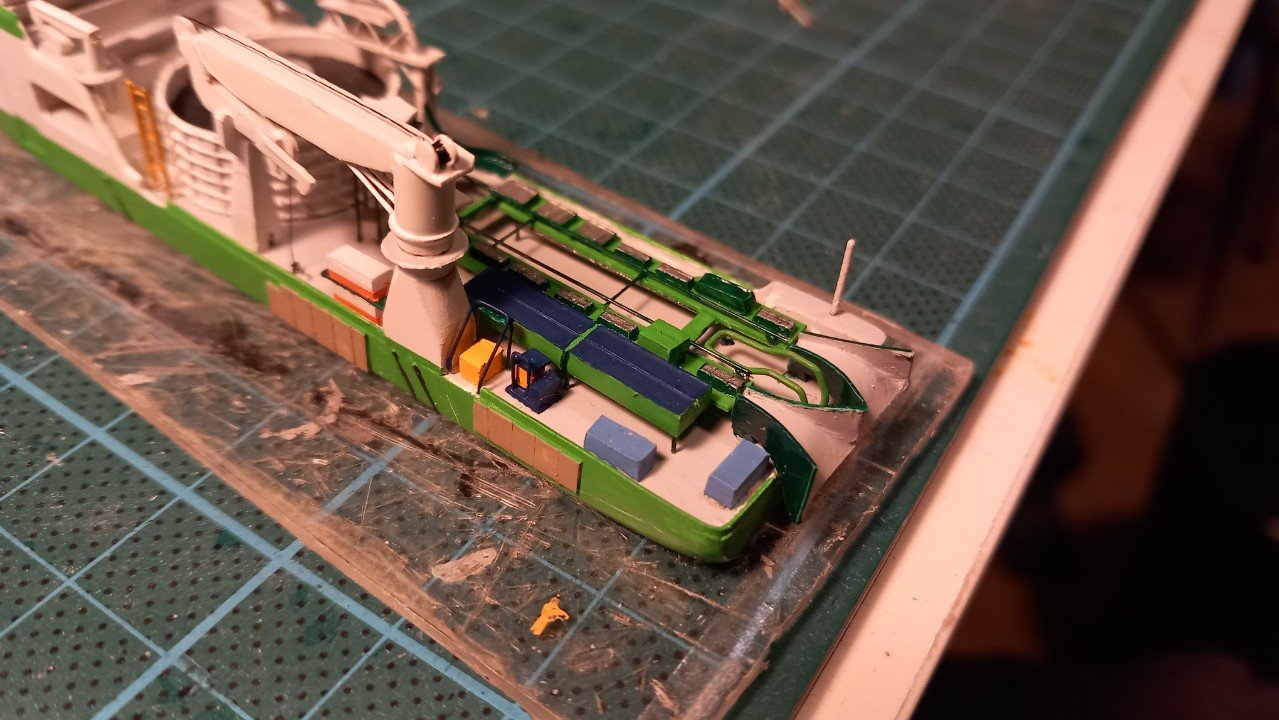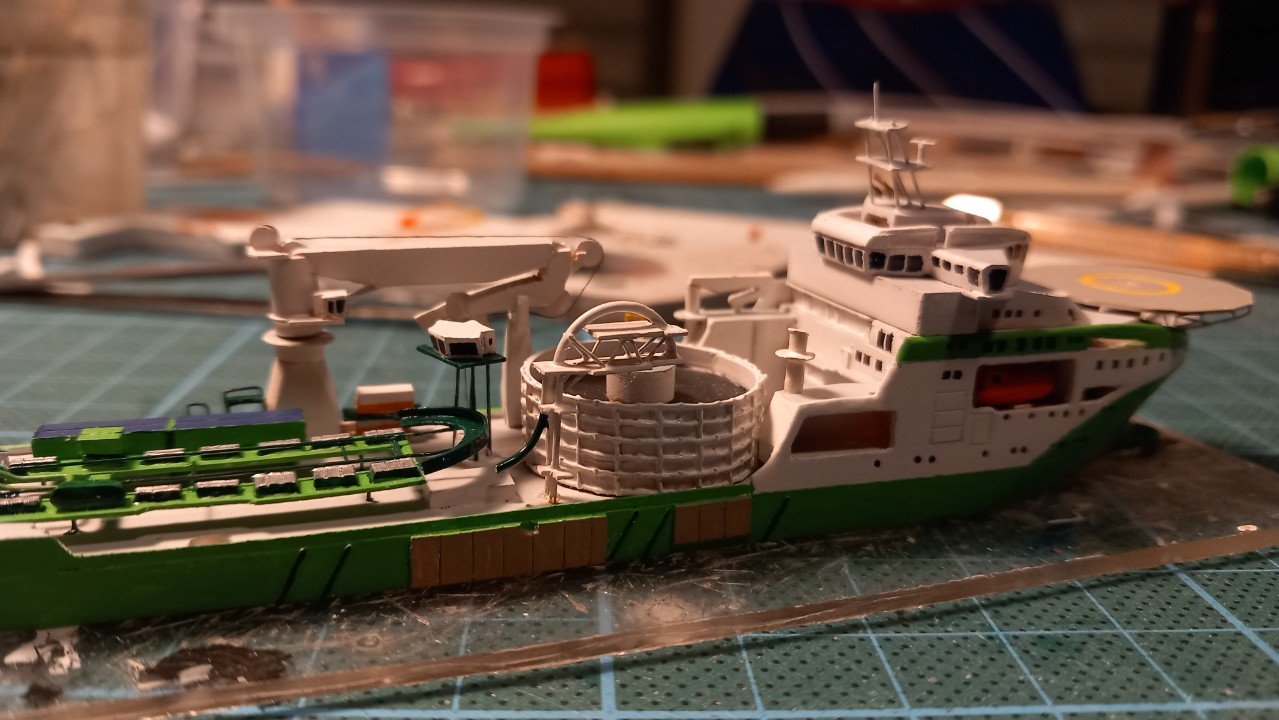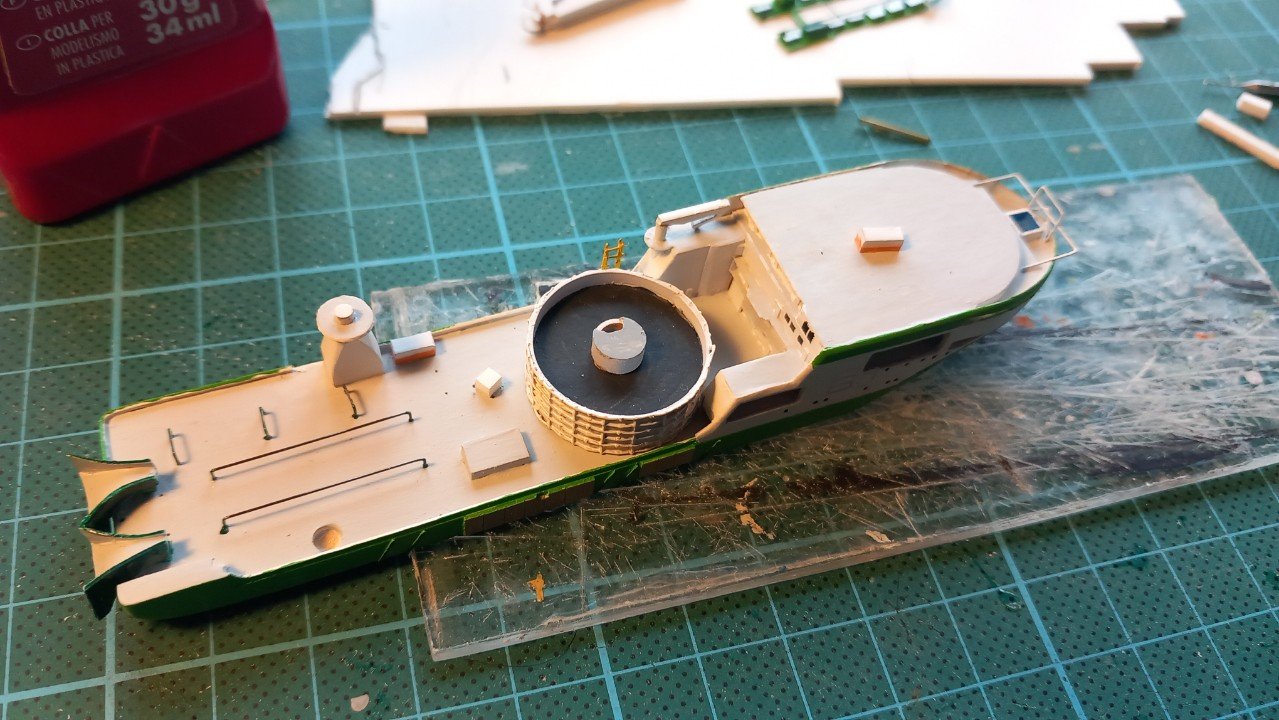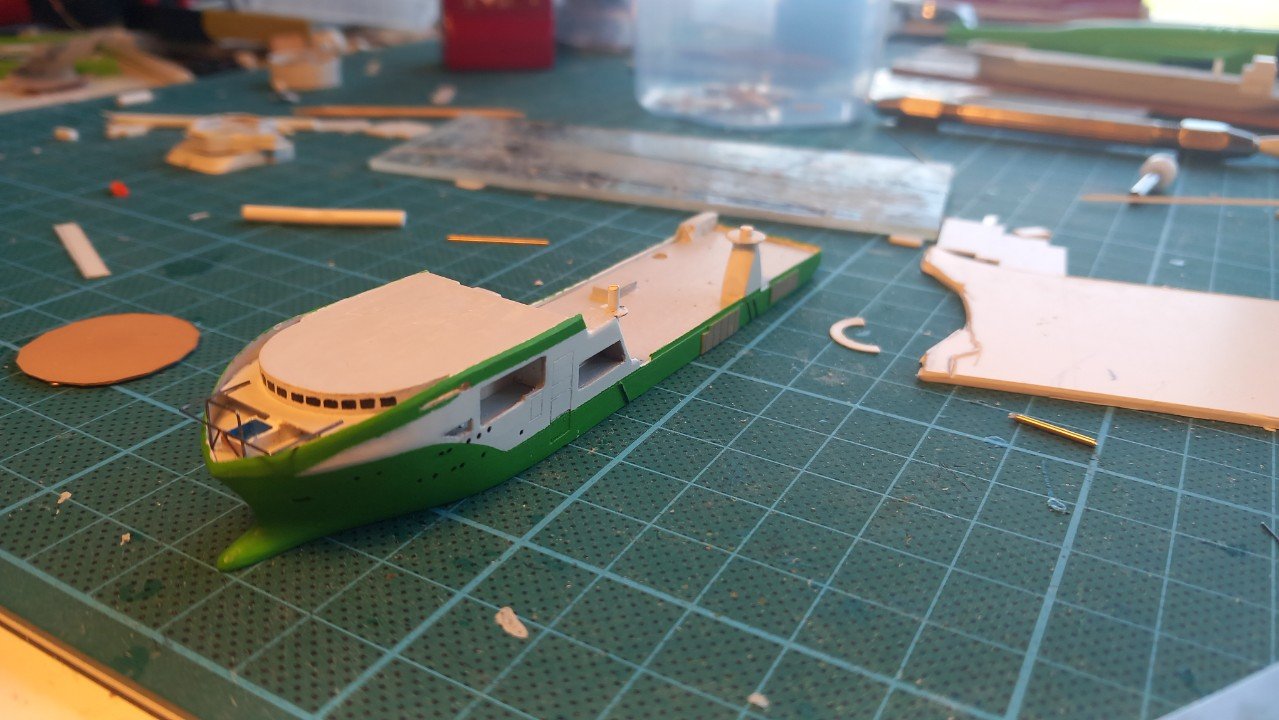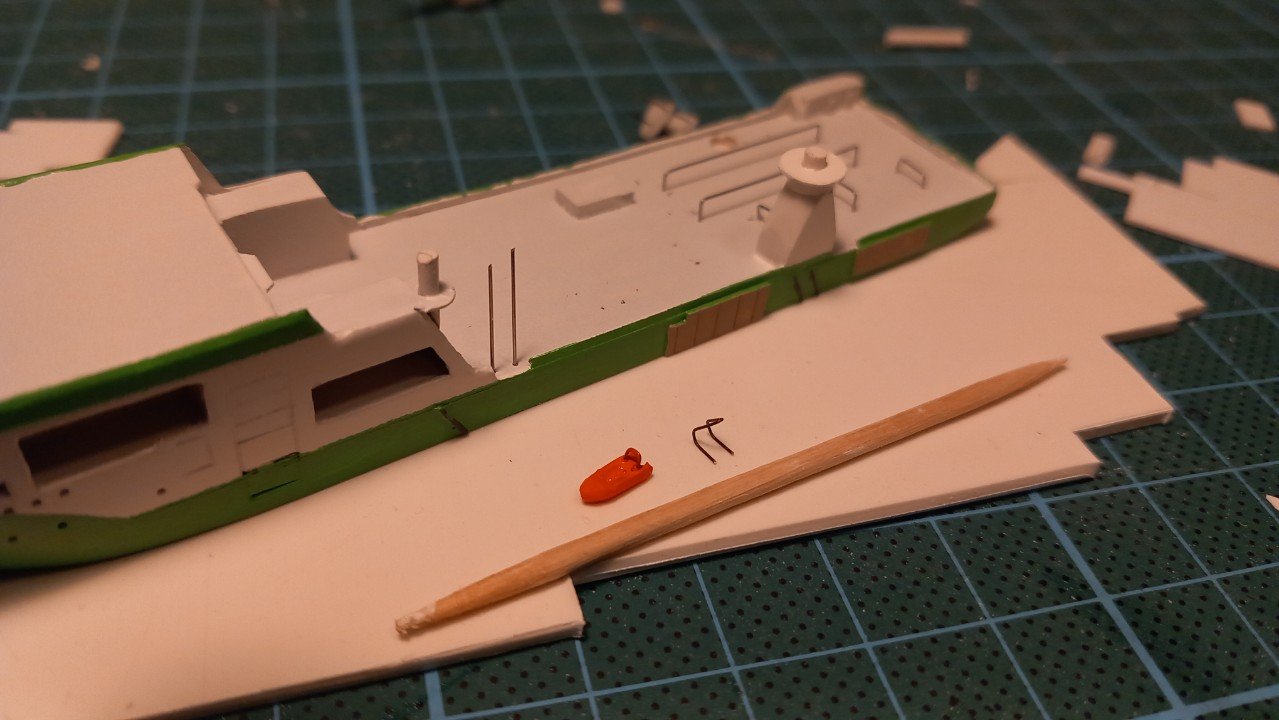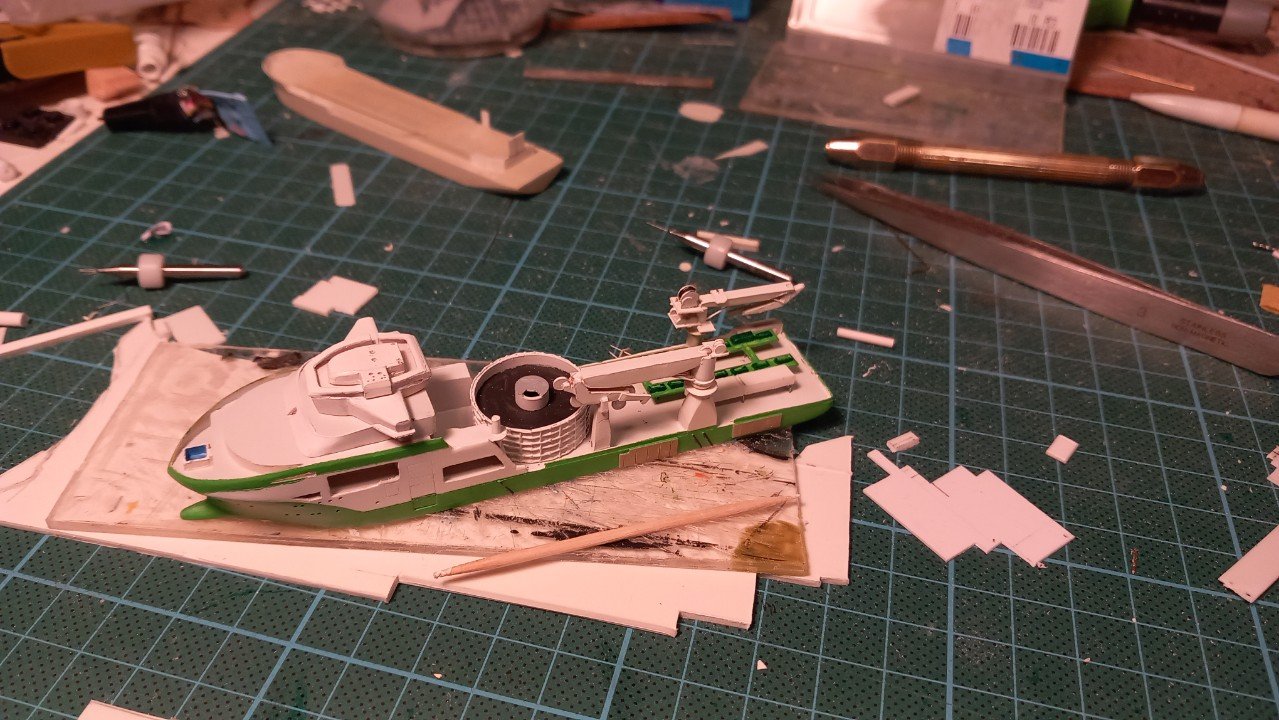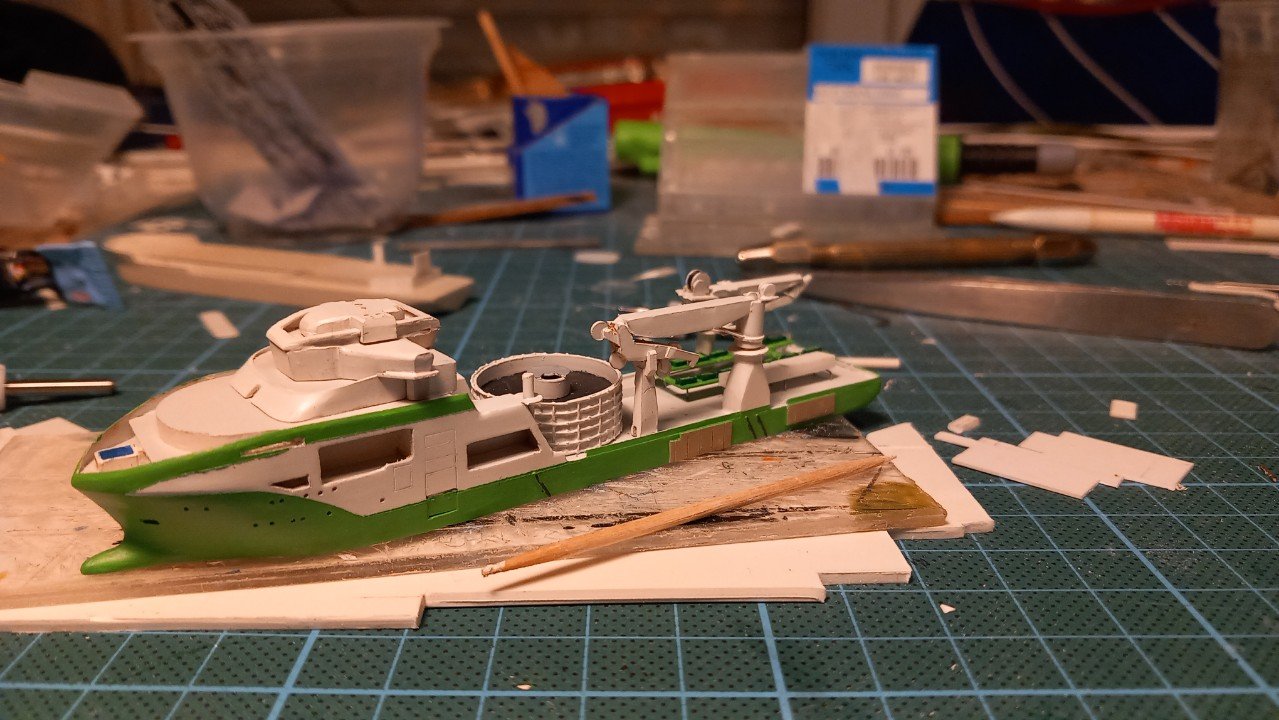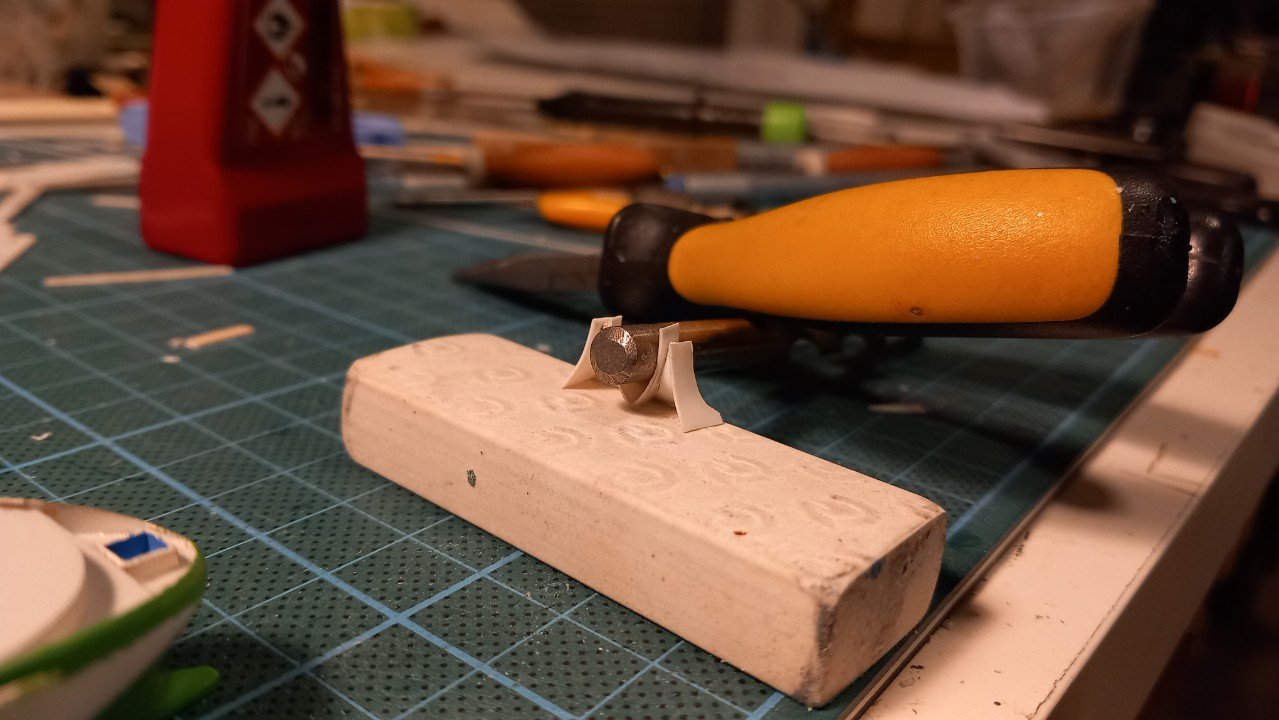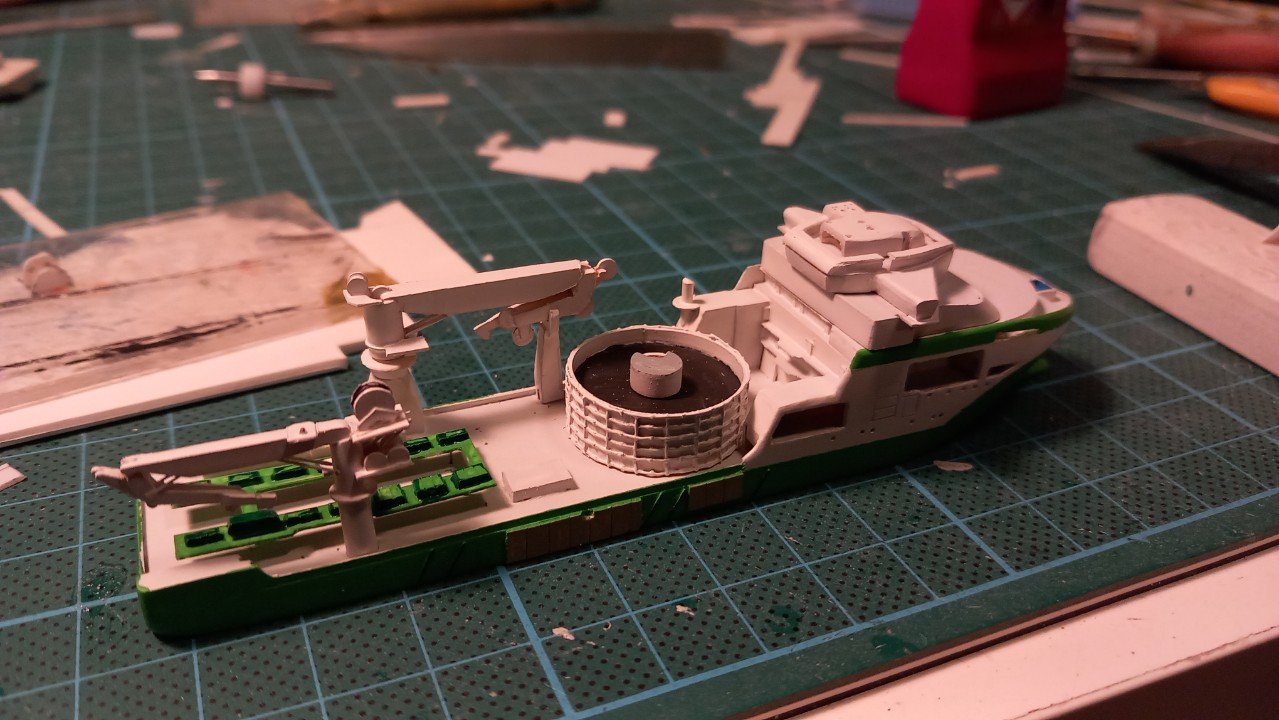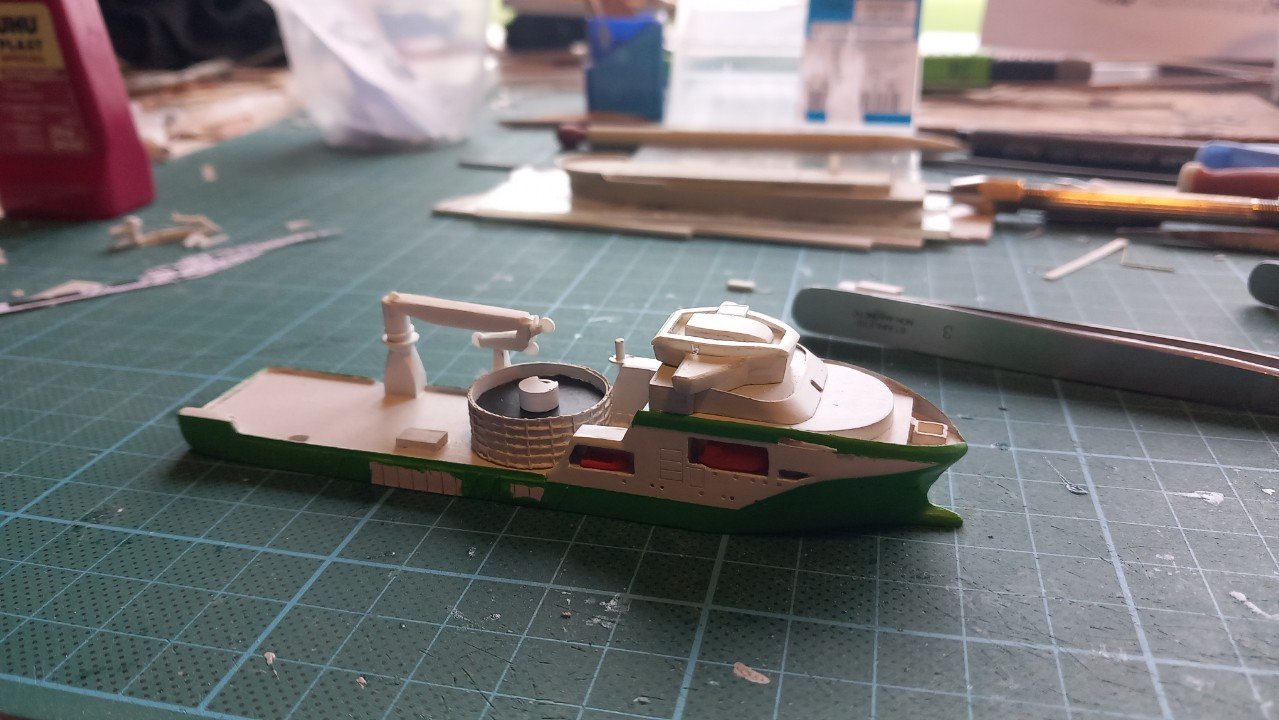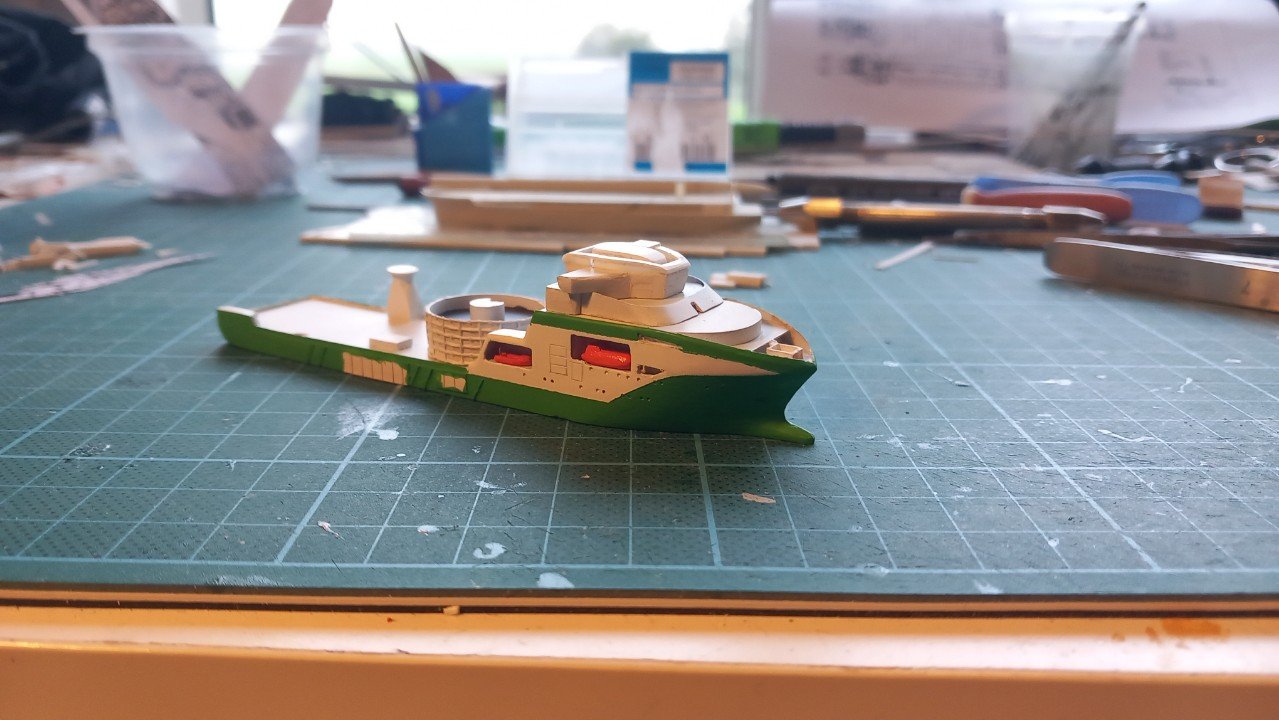-
Posts
624 -
Joined
-
Last visited
Content Type
Profiles
Forums
Gallery
Events
Everything posted by Javelin
-

Fund raising
Javelin replied to Russ2025's topic in Using the MSW forum - **NO MODELING CONTENT IN THIS SUB-FORUM**
Made my donation today using the link. Didn't have any issues... Perhaps not an accepted type of card? -
Hi Paul, Ian, I indeed noticed he (offshore-vessels-drawings.com) was also selling the drawings and pictures for Viking Neptun (from her Eidesvik period) and used some of his pictures for details (like the swimming pool area and aft part of the accomodation). I do doubt he's allowed to sell these as ships drawings are normally quite confidential with notices explicitly stating that they can not be reproduced or used, disclosed or copied without either the owner or shipyard's permission... That is also the reason most companies are not very forthcoming with drawings towards modellers. Occasionally they are helpful and even eager to help, so it never hurts to try and ask.
-
I was wondering about that too Keith, I guess people get sloppy or old over here 😁 @Paul Le Wol, I wouldn't get my hopes up. It's one of my typical preparations I do when I'm at sea. Since I'm unable to build onboard, I do research of ships and ideas at that time. Unfortunately I can't build each project in my limited holidays, so I end up with lots of projects and ideas in various stages of development that will never get built. The choice for VN in this commission at least allows me to use some of that past research, but 1/1250 really isn't my scale...
-
Although I didn't make any real eyebolts yet, I normally use copper or brass wire and turn it around a drill bit to make small round rings or eyebrows. If you use brass wire, it's best to use a 1mm or 1.2mm bit, when using copper a 1.5mm bit will do. You can experiment a bit on what goes best. The advantage of copper is that you can easily cut it with a knife and cut it very straight (I use a lot of copper wire from electrical wiring, since you find a lot of different diameters). They are of course weaker, so you have to be more careful than with brass.
-
Great subject, but quite a challenge at that scale! I assume you've seen this site and the rather rough drawing contains. https://www.granturismoevents.com/story-wallypower-118-the-coolest-luxury-yacht-in-the-world/ The site mentions 3.5t of fuel per hour for the gas turbine, that would make the bill "only" around $3500 per hour at regular MGO prices.
-
Thanks for the comments and likes. In all my haste to call this one finished, I actually forgot about the 2 large communication domes on either side of the bridge. I've made them from 3mm styrene rod inside my Proxxon and filed them to shape. As you can see, the second ship is also taking shape. @Glen McGuire, the only reason this build went do fast, was my preparation. I have been preparing a 1/100 scale RC build of this ship, which means I was familiar (and thought of solutions) with most of the issues I'd encounter by that integrated accomodation. Also having built a very similar cable layer in the past has helped to detail that installation with precious little info available. Although I have built a Trailing Suction Hopper Dredger before, I believe that Lange Wapper model may be more challenging. I've never been onboard of it and the dark green deck colour makes details on deck very difficult to see in pictures.
-
The item I sort of ignored is what I assume a loading tower for the carousel. I assume the cable comes in from deck (dark green bend near the deck) and pulled up over that loading bend over the edge of the carousel. Not sure if that tower can rotate inward and outward to follow the cable or not. Here's a shot of the ROV area. And with the first rescue boat in place. The auxiliary crane is being rigged and then it's time to round this one up.
-
I don't see any stupid questions here @Glen McGuire, but speaking of them, wait until I start my Sherbourne... 😂 The "New" ROV (Remotely Operated Vehicle) area is located just behind the big crane on portside. It's probably hired equipment since it's a blue A-Frame and it seems to be a habit in the offshore to rent this kind of equipment from specialised companies like Helix Energy Solutions or Reach Subsea. I simplified this equipment quite a lot compared to my 1/700 Living Stone. It's not very visible in this model and not worth hours of work to make each support beam and detail.
-
That is looking marvellous Phil. Very realistic in any case. Were there really ropes wound around those rings on 4 places? Just wondering since I'm from the reflective SOLAS tape era and don't know about Navy habits on this...
- 433 replies
-
- minesweeper
- Cape
-
(and 1 more)
Tagged with:
-
Assembling a lot of parts now. This way it becomes obvious which parts I forgot to build 🤫 The crane is rigged with fly tying thread and the end is fixed to a tiny piece of copper wire inserted in the deck. They lash the real hook on deck as well to avoid swinging during sailing. The boats were glued to the davits to enable insertion in the recesses. Helo deck has its markings. I used my stencil cutter with vinyl to make the mask for the first time. Although the vinyl sticks a little too strong to my liking it did not have any bleeding nor did it tear out any paint underneath. Working on the ROV area as well as some details on starboard, the main item being a large curved loading arm for the carousel. I thought to leave it out (no idea why really), but it's a really visible item.
-
Since I was doing the last portholes/windows on the side now, I took a picture. In this case I used an upper and lower piece of tape. Normally this marker needs a porous surface (=paper). It does dry on the painted surface, but takes a long time to do so. Unfortunately it does appear to creep in and under the masking tape when the masking tape is left for too long. The result is visible in rather unsharp top and lower edges with occasional smudges. I might remove them with a knife tip. And finally finished handling and turning over that hull, so time to continue building up now. A bit to small to use a piece of railway track, so I'm using other relatively heave and stable objects. Nearly there now!
-
That is the bridge itself, however in your defence it's complicated on this vessel since they've incorporated the funnel into it. I believe this is done for several reasons, perhaps even to use the heat from the exhausts to heat up the accomodation She's built for cold weather and effeciency after all. That bridge is built from styrene, several layers, thickness adapted to certain steps required by its shape. I cut those layers in the shape of the largest dimensions (roof top), then I draw the bottom outline on the lower surface and then I carve and/or file the sides connecting the top and bottom outlines. Hope that is somewhat clear?
-
Small structure? 🤔 Assuming you're asking about the base of the mast, everything is styrene. The bridge as well actually. The only parts that are just copper are the stanchions (made from electrical wiring, rolled straight between the tabletop and a steel ruler). Also the exhaust pipes, which are difficult to see in these pics, are also brass and copper wire. The windows are done with a very fine tip marker. Sometimes I use 1 or 2 rows of masking tape to keep them in line on the bottom and/or top.
-
Moved ahead on that mast and started adding windows all over the place, to be able to move ahead on the final phase. I've been producing a lot of details as well, so I'm nearly finished with those. Only the ROV and its A-frame are remaining. The helo deck is also in its last phase by now, adding its darker coat and putting at least H with circle on it.
-
Thanks, moving forward. Finished that darker grey deck colour and continued with the helo deck and its supports. In the meanwhile also started the challenge of that fancy mast structure. Doesn't look too good for now, but next attempt will be better. It's mostly the middle platform that causes issues. (still a template for now) And the cable lay system is advancing as well. I will be able to start installing a lot of parts now since the grey paint is on.
-
Thanks for the reactions everyone. I've now come into a detailing phase, lots of work and little to show for it. Prepared a lot of items for primer and final white coats. Cranes are nearly finished, the control cabins are also sprayed, but I still need to add the windows before mounting them on the cranes. They will also get fly tying thread wires. As you can see, the cable lay installation is started. A lot items are left out. below you see the stern chutes (shoots?) in progress. They are probably the most fiddly parts I ever built. Mostly built up of 0.3mm styrene sheet and just 1 single straight edge on the whole thing.... In between I'm doing some "quick" items like davits and the large yellow boarding ladder (called a "surfer" to transfer people from small craft at sea). On other ships its either near the stern (bad when the vessel is pitching) or permenantly on the side (annoying when mooring since it requires decent fenders and often interferes with shore fenders). So here they seem to only hang it over the side when they use it. The helicopter deck is also cut and primed. The reason it's all still dry fitted is that I'll need to repaint the deck in a slightly darker shade of grey (as well as the bridge top, chutes etc.)
-
Kan nog 5000 duimkes bijzetten, maar je hebt het wel begrepen denk ik. Love it. So small, yet colourful. Those leeboards indeed look very heavy for their hinges, yet on the other side they are made of wood, so their weight itself would mostly be carried by the water when deployed. In operation I also don't believe the righting forces would be that large considering the limited size of the vessel.
- 68 replies
-
- Corel
- Große Jacht
-
(and 1 more)
Tagged with:
-
Well I have to admit the knife in question is around 3 years old... And I have to admit, or announce that I have a Vanguard HMS Sherbourne on the way! I finally took the plunge. Joined a couple of years back to start building wooden classic vessels, but had trouble to get started. Very difficult to decide between my normal habit of scratchbuilding or starting with a kit. So recently I figured I just needed to take a step and see where it goes. As for VN, this where we were yesterday. It still needs some fixes, but overall it's quite ok. Of course I also still need to paint the black tube fenders and wooden (grey-ish) landing areas.
About us
Modelshipworld - Advancing Ship Modeling through Research
SSL Secured
Your security is important for us so this Website is SSL-Secured
NRG Mailing Address
Nautical Research Guild
237 South Lincoln Street
Westmont IL, 60559-1917
Model Ship World ® and the MSW logo are Registered Trademarks, and belong to the Nautical Research Guild (United States Patent and Trademark Office: No. 6,929,264 & No. 6,929,274, registered Dec. 20, 2022)
Helpful Links
About the NRG
If you enjoy building ship models that are historically accurate as well as beautiful, then The Nautical Research Guild (NRG) is just right for you.
The Guild is a non-profit educational organization whose mission is to “Advance Ship Modeling Through Research”. We provide support to our members in their efforts to raise the quality of their model ships.
The Nautical Research Guild has published our world-renowned quarterly magazine, The Nautical Research Journal, since 1955. The pages of the Journal are full of articles by accomplished ship modelers who show you how they create those exquisite details on their models, and by maritime historians who show you the correct details to build. The Journal is available in both print and digital editions. Go to the NRG web site (www.thenrg.org) to download a complimentary digital copy of the Journal. The NRG also publishes plan sets, books and compilations of back issues of the Journal and the former Ships in Scale and Model Ship Builder magazines.

